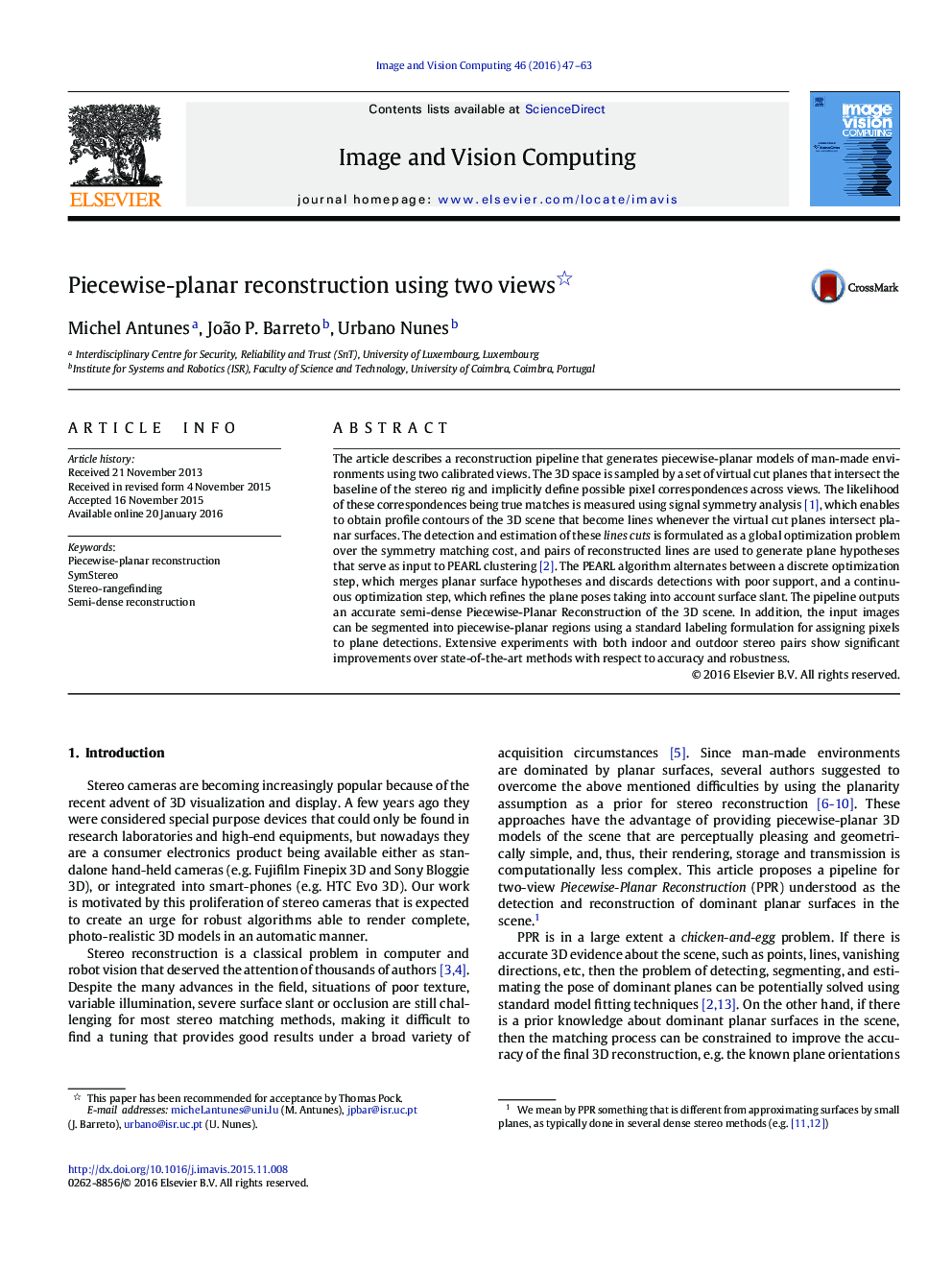| Article ID | Journal | Published Year | Pages | File Type |
|---|---|---|---|---|
| 526933 | Image and Vision Computing | 2016 | 17 Pages |
•A piecewise planar reconstruction pipeline is proposed.•Line cuts are detected based on signal symmetry analysis.•SymStereo and PEARL are combined for carrying the 3D reconstruction and plane fitting simultaneously.•Experiments show significant improvements over state-of-the-art methods.
The article describes a reconstruction pipeline that generates piecewise-planar models of man-made environments using two calibrated views. The 3D space is sampled by a set of virtual cut planes that intersect the baseline of the stereo rig and implicitly define possible pixel correspondences across views. The likelihood of these correspondences being true matches is measured using signal symmetry analysis [1], which enables to obtain profile contours of the 3D scene that become lines whenever the virtual cut planes intersect planar surfaces. The detection and estimation of these lines cuts is formulated as a global optimization problem over the symmetry matching cost, and pairs of reconstructed lines are used to generate plane hypotheses that serve as input to PEARL clustering [2]. The PEARL algorithm alternates between a discrete optimization step, which merges planar surface hypotheses and discards detections with poor support, and a continuous optimization step, which refines the plane poses taking into account surface slant. The pipeline outputs an accurate semi-dense Piecewise-Planar Reconstruction of the 3D scene. In addition, the input images can be segmented into piecewise-planar regions using a standard labeling formulation for assigning pixels to plane detections. Extensive experiments with both indoor and outdoor stereo pairs show significant improvements over state-of-the-art methods with respect to accuracy and robustness.
